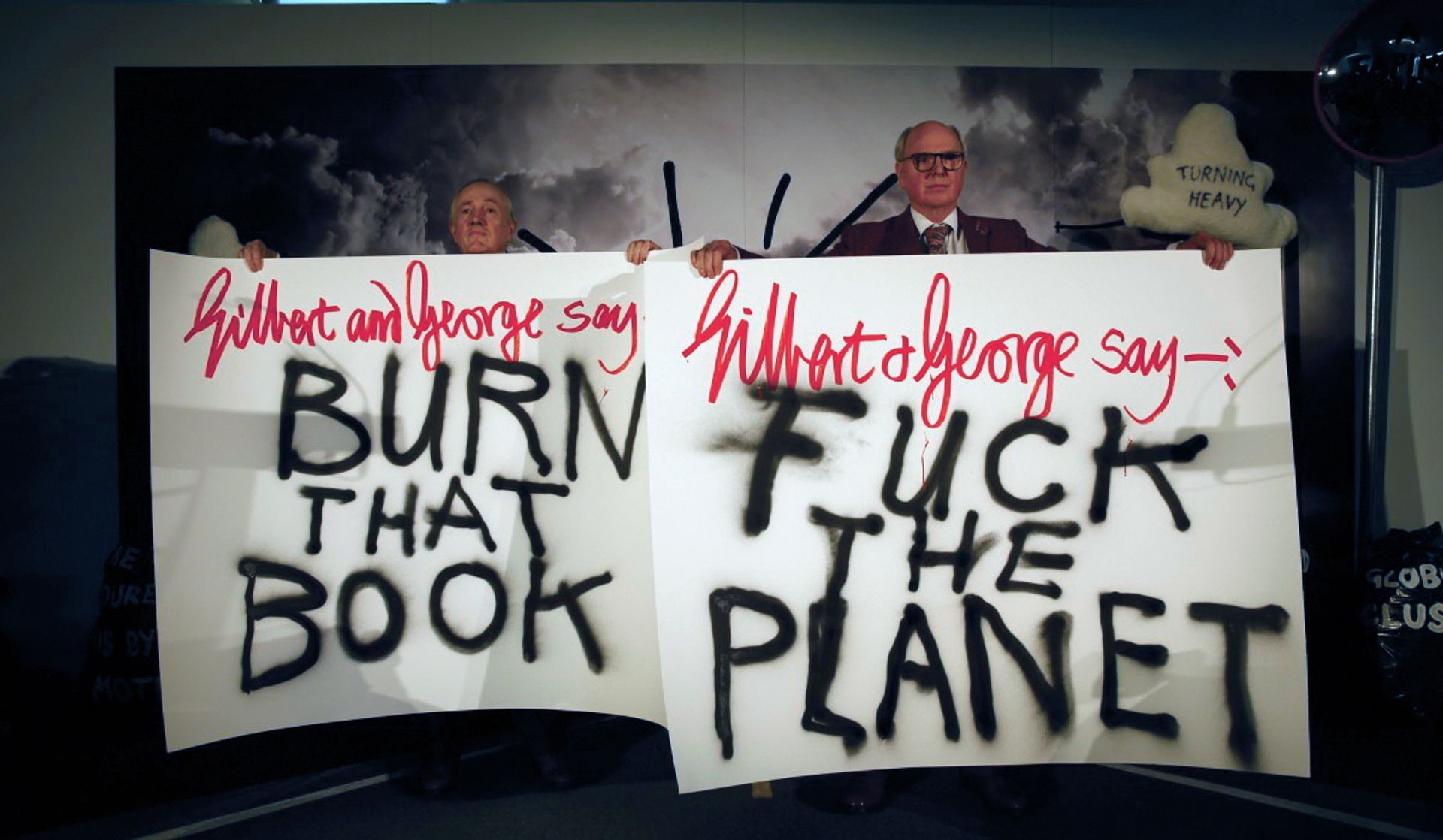Gilbert and George are returning to their performing roots. They have compiled more than 3,500 “fuckosophies”—“philosophical texts that can be understood on a human level by anybody”—which they plan to record on vinyl. “Onward Christian fuckers”, “fuckers have feelings too”, “diddly fuck” and “fucking Sussex” are among the sweary proverbs (all English counties with the word “sex” in them have been included).
“We are going to make it as a record because everyone is doing vinyl again. For us, it all started with a gramophone record,” the artists say. Gilbert and George made their debut in London in 1969 as “living sculptures”, singing along to Flanagan and Allen's music hall classic Underneath the Arches. It was the first time the pair appeared together in their trademark flannel suits.
The Banners is another series that began as a performance, and the new body of 30 works is due to be unveiled at White Cube in London next month (25 November-24 January 2016). Two banners (“Fuck the planet” and “Burn that book”) were first unfurled at the Serpentine Marathon last year, during which Gilbert and George silently held them aloft for four minutes.

The audience “froze”, the artists say. “Everyone liked ‘Fuck the planet’ because it was amusing. But everyone was a little nervous about ‘Burn that book’ because they saw it as negative. We see it as a positive thing, like saying: ‘Tear up the rule book’”. The “book” also refers to religious scriptures. “By doing that banner we realised there are only two books: the Holy Bible and the Qur’an,” they say.
For the Banners, which will hang three deep on the wall at White Cube next month, Gilbert and George have written their own ten commandments. “Fuck Him”, “Make cunnilingus compulsory” and “Fellatio for all” are among their edicts for 2015. The artists have also repeated phrases they have used in their work for several years, such as “Fuck the teachers”, “Ban religion” and “Decriminalise sex”.
The new works are also a form of protest, testament to Gilbert and George's vehement secularism. “Religion has done so much damage to people and still is. The wars that are going on all over the world are religious wars,” they say. “We still have bishops in the House of Lords—bishops held up the abolition of slavery by 30 years.” In characteristic contrariness, however, Gilbert and George say the banners are “pro, not against, even the one that says ‘Ban religion’”.
The ten “principles”, as Gilbert and George describe them, have been spray-painted onto large white banners with brass eyelets to attach them to the wall. Graffiti has been incorporated into the artists' work since the 1970s, and several examples go on show in a major retrospective of their work at Tasmania’s Museum of Old and New Art on 28 November.
Spitalfields in east London, where Gilbert and George live and work, is known for its street art. Graffiti, however, was seen very differently when the pair first moved to the area in the mid-1960s. “When we did the Dirty Words pictures [in the late 1970s], people only wrote something on a wall if they were driven to do it. It was done out of desperation,” the artists say. “Now the most middle class thing to do in the world is take your mother on a street art tour.”
When asked about the rapid gentrification of east London, Gilbert and George say it is a “great improvement” from when they first moved there, noting that Clapton Road in nearby Hackney was known as “Murder Mile” for its shootings. “People used to say to us: ‘Now that you are successful artists, why don’t you move to a nicer part of London?’ Now they say: ‘Shoreditch is so trendy; don’t you want to move somewh ere edgy?’

